Carl Zeiss Batis 18 mm f/2.8
3. Build quality
The following chart allows you to compare the tested Batis to other full frame 15-20 mm instruments as fast as f/1.8-2.8. The Batis is physically light and its weight, amounting to just 330 g, sticks out in this group. It’s not much heavier than the Pentax smc FA 20 mm f/2.8 and two times lighter than the Irix. Its optical construction is not especially complex either, the Nikkor with identical parameters has more elements that the tested lens. The lightness of the Batis makes us worry about the quality of materials. Usually, while handling other Zeiss lenses, we had an impression of touching something heavily armoured and virtually indestructible. Not this time, though.
In the following photo the Batis 2.8/18 (first on the left) is positioned next to its 2/25 brother and the Sonnar 1.8/55 FA.
Please Support UsIf you enjoy our reviews and articles, and you want us to continue our work please, support our website by donating through PayPal. The funds are going to be used for paying our editorial team, renting servers, and equipping our testing studio; only that way we will be able to continue providing you interesting content for free. |
- - - - - - - - - - - - - - - - - - - - - - - - - - - - - - - - - - - - - - - - - - - - - - - -
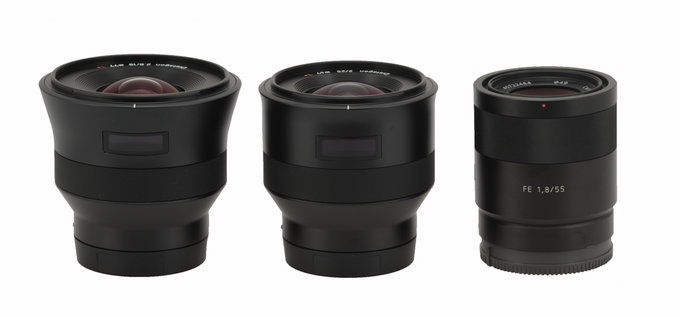 |
The tested lens starts with a metal mount surrounding contacts and a black window made of plastics, which dimensions are 29×24 mm. Through that window you can glance the inner tube of the lens, properly blackened and matted but also made of plastics. It explains to some extend a surprisingly low weight of the lens – its outer shell is made of metal but the interior features many plastic parts.
A rear element doesn’t move and is about 2 cm in diameter. Its cross section is not round, though, because it’s positioned in another window which dimensions are slightly smaller than the dimensions of the element itself. The lens features a dust and moisture – sealed design.
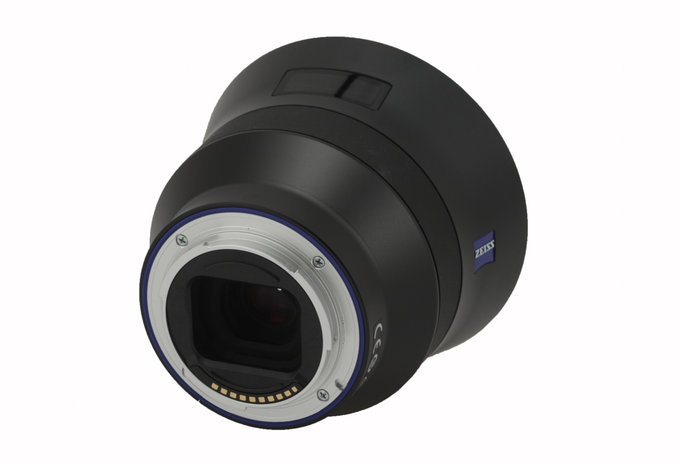 |
The proper body of the lens starts with a black, metal ring which diameter increases swiftly as you move away from the mount. On the ring you see a blue dot, making an alignment with a camera easier, the mount type (E-mount), then name and serial number of the lens and information that it was produced in Japan.
Further on you see a manual focus ring, as wide as 15 mm and completely covered by smooth rubber armour. The rubber sticks to your fingers very well so the ring is a joy to use but it also catches dirt easily, a small drawback. The working range of the ring depends on the speed of turning. If you move the ring fast, an angle of 150 degrees is enough to go through the whole scale; if the ring is turned slowly you can reach an angle of almost 250 degrees. Both values allow you very precise settings.
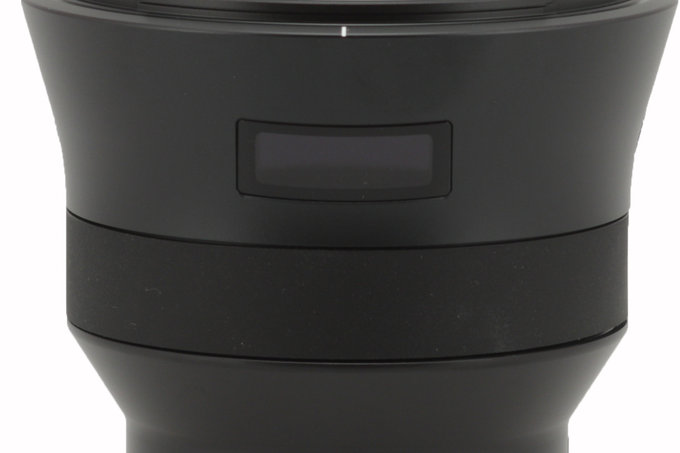 |
Over the ring you find a window with a distance and depth of field scale. In fact it is an OLED display which is activated only when you switch the camera on and put it into the manual mode; then it shows you the distance of the focal plane from the camera as well as the depth of field range.
Still you have to remember that in such an instance the lens draws power from the camera battery which, in the case of the Sony A7R, is already overused by other electronic systems. Additionally the light emitted by the scale, not so problematic during the day, might annoy you at night.
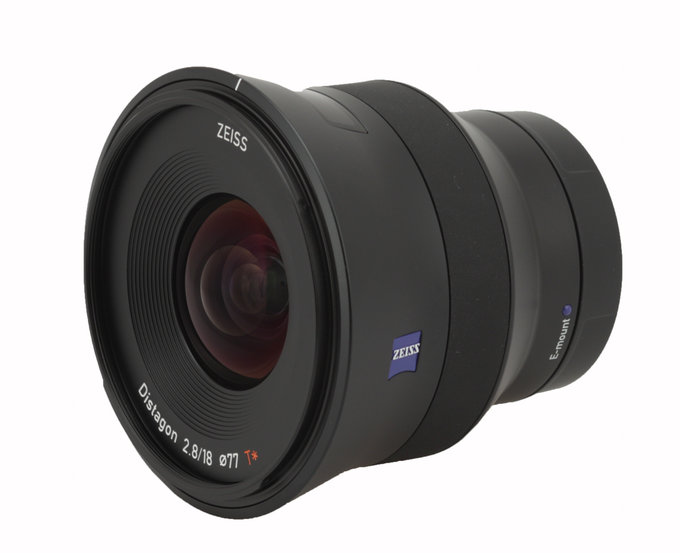 |
Two Zeiss company logos can be found on both sides of the smooth, metal ring featuring also a distance scale window.
At the very end the lens gets a bit wider, turning into a hood mount. The front element doesn’t move and is 39 mm in diameter. It is surrounded by an inscription “ZEISS Distagon 2.8/18 ⌀77 T*” and a non-rotating filter thread, 77 mm in diameter.
As it was already mentioned, the tested lens is a Distagon construction featuring 11 elements positioned in 10 groups.
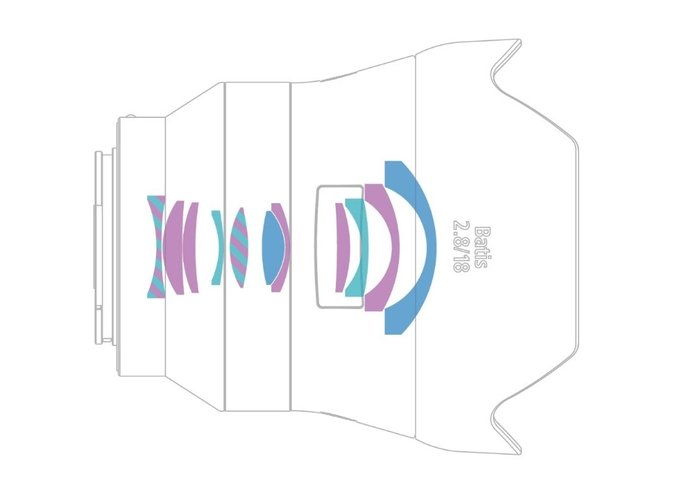 |
Among them there are 5 elements made of special material (marked as purple in the diagram) with 2 aspherical surfaces (light blue) and 2 elements which combine special glass with aspherical technology (marked in the diagram with stripes).
Buyers get both caps and a petal-type hood in the box. It’s a pity there is no kind of case included – if you are asked to pay $1500 you can expect such an accessory included.
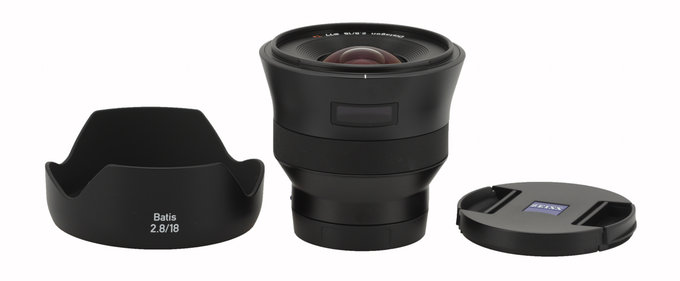 |






